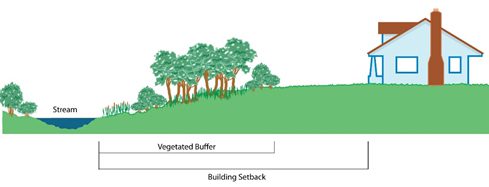Think you’ve found the perfect property? A few things to consider before closing the deal
Mark Twain, our fellow Missourian once said “Buy land, they’re not making it anymore.”
As, homeowners, business owners, corporations, or school districts contemplating purchasing property for a new facility, there are numerous considerations as one evaluates a piece of property.
You may have found a property you think is perfect for your project: the right size, the right price and has the all-important right location. But before you fall profoundly in love with this slice of heaven and put a contract on it, there are many factors to review with respect to the potential purchase.
Here are some of the factors you can rely on your design professionals to assess with you: infrastructure (utilities available), property zoning, topography, easements, covenants, and subsurface conditions. While there is not a set formula for evaluating every piece of property, there are several aspects/steps to consider in your due diligence as you analyze a site. Let’s take a deeper look at each factor.
Zoning: Most municipalities have zoning regulations that dictate the types of building and use that is suitable for a particular zoning classification. Often the piece of property you are interested in is not zoned properly for the type of use for your project and will require a rezoning through a formal City or County process. For many zoning groups there exists some exceptions that allow for conditional use permits to be reviewed and approved by a Board of Adjustment. In either case, if rezoning is required, expect the process to take up to several months.
Subsurface Conditions: While the lay of the land may look perfectly suitable on the surface, it may in fact have subsurface surprises be it a former lagoon or building site, bedrock or expansive soils. This is why we strongly recommend a geotechnical report for where the proposed building will reside. In a geotechnical analysis, a drill rig will take core samples below the earth noting all the layers of soils below based on which the engineer can make recommendations for appropriate footings and foundations. In some cases, unsuitable soils must be removed and replaced with engineered fill that will accommodate the probable building loads.
Natural Features: A good example is an existing stream that may transverse the property. While this might be scenic, it can limit the size of the buildable portion on the lot. This stream may be part of the local water shed and have a significant storm water buffer as a required set back. It is not uncommon for a 2-acre parcel with a stream to only end up with a ¼ acre of actual buildable area. Examples of other natural features could be stone outcroppings or mature trees. Additionally, some sites may have man-made features such as ponds, retaining walls or existing buildings that will factor into the site/contextual analysis as well.

Infrastructure: Believe it or not, often times the available infrastructure in tandem with site access determines the best/most ideal location for a building. Power (electrical), water, sewer, gas, phone, cable and fiber availability and capacity of such utilities are important factors to consider whether the property is the right location. Will the capacity of the existing infrastructure accommodate your building needs, or will additional upgrades be required potentially increasing your cost to develop said site? A boundary and topographic survey will be critical in identifying the infrastructure considerations. Capacity analysis will inform you as to whether upgrades will need to be made. Often the expense of capacity upgrades fall largely on the developer of the site.
Topography: A topographic survey will identify the property boundaries, identify existing utilities and document the existing contours (rise and fall) of the land. This survey can be critical in assessing the overall balance of available soil on the site for cutting or filling in and around your building site.
While this summary provides many things to consider when evaluating a building site, there are several other aspects that go into a full evaluation and no two sites are the same.
As design professionals, we are able to take an objective look at a property, quickly evaluate its assets and barriers for use on your specific project. Our best advice is to, in tandem with your realtor, consult your design professional for a site feasibility study. On these studies, we take a team approach and work with civil engineers and surveyors for a comprehensive site analysis.
A site analysis is a vital prelude to making sound decisions about optimum site utilization and will identify the most effective ways to respect and capitalize upon site assets. In some cases, it may actual prevent purchase of a site that isn’t as suitable as initially thought, but the process will ensure you are making an informed decision.
Featured Resource

Programming: Making a Building Wish List
"Getting your Ducks in a Row" E-booklet 1
Download E-BookletCategories
- Design Nuts & Bolts
- Ownership, Operations & Maintenance
- Energy Efficiency
- Making a Great Project Team
- "Building" your Business
- Dollars & Sense
- SOA News & Events
- Interior Design
- Case Studies
- Sites & Landscaping
- Sustainable Design
- Adaptive Reuse / Renovation

